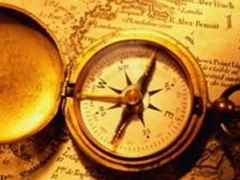Business Strategy or Marketing Strategy?
Published in LaZOOZ - Strategy, Marketing and Innovation Newsletter, Issue 45, By Ari Manor, CEO, ZOOZ
There are many different types of strategy, and it's important to differentiate between them. This time we will focus on the differences between business strategy and marketing strategy:
- Business strategy answers the question "Which markets should we target?"
- In other words, how much money do we want to earn (what are our business objectives) - and subsequently, where we want to do business: what are our areas of business, who is our target audience, and what goods and services do we offer
- For example - At first, Teva pharmaceuticals chose to target the generic drug market in Israel (manufacturing and marketing drugs whose patents have expired), and then branch out in the same industry but to overseas markets. In recent years, Teva has also started working with prescription drugs (developing and marketing original drugs such as Copaxone).
- Marketing strategy answers the question: "How should we do business in these markets?"
- In other words, what special actions should we take to succeed in each of our markets: what differentiation and positioning do we want to achieve, what will our relative advantage be, what will our product mix be (product, price, location and sales promotion).
- For example - Teva decided to attain an advantage in the generic drug market by offering customers the lowest prices. It therefore had to grow quickly through mergers and acquisitions (and become experts at it, since most mergers and acquisitions fail), and concurrently streamline and reduce manufacturing and operational costs (by investing in technological R&D, mechanization and automation). Teva is currently the largest and most efficient generic drug company in the world, which is the relative advantage it has over its competitors.
- It is noteworthy that planning a business strategy is the only stage where we can try (and must!) decide who our customers will be. After deciding on our business objectives (how much money we want to earn), we check out different markets and disqualify those that cannot yield the desired profit. At this stage, it is our full right to refuse to work with certain markets and all the customers in that market. Only if we find a large enough, and preferably growing market that is not too competitive and suits our capabilities - we select it, and thereby commit to working with the customers in that market.
- In contrast, when we plan a marketing strategy we do not choose our customers, who already come part and parcel with the market. After choosing a market (at the business strategy stage), we must honor the customers in our market and tailor solutions, goods and services to them. The customer becomes the king. However, we can segment our customers and focus only a portion of them. However, these segments are already a part of the market we have chosen, and we must work with them, get into their heads, listen to what they want, understand them, please them, and develop a unique way of working with them.





